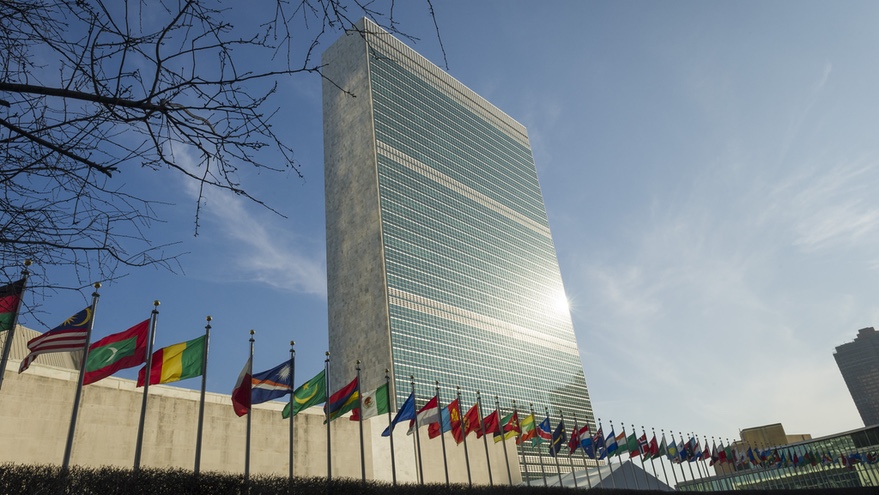On the island of Hainansouth China, one possible future is taking shape within a compact labyrinth of concrete and metal. Last July, a crane hoisted the upper half of a steel containment shell into place. Slowly, steadily, workers are piecing together a miniature nuclear reactor.
This is Linglong Onewhose diminutive size is a drastic shift from the gigawatt-scale megaprojects that dominate nuclear energy today. But if one persistent cadre of nuclear optimists are right, then Linglong One could be a model for fission’s future in an age of clean energy.
Small reactors won’t save the day quite yet; depending on the country, there’s still plenty of regulatory and logistical issues to hammer out. But, experts say, the 2020s could help set the foundations for a nuclear blossoming in decades to come.
If nuclear reactors were aircraft, consider the SMR today a 1910s-era biplane. And it’s still on the drawing board.
“It’s a really exciting time for the nuclear industry,” says Victor Ibarra Jr.a nuclear engineer at the Nuclear Innovation Alliance think tank.
When it comes online in 2026, Linglong One will have a capacity of 125 megawatts of electricity (MWe)—equivalent to around 40 onshore wind turbines. Next to a large reactor (often in excess of 1,000 MWe), 125 MWe may seem insignificant. Why, after all, would an ambitious nuclear reactor designer want to go small?
In part because large reactors can be expensive and delay-prone. The twin 1,110 MWe reactors at Georgia’s Plant Vogtlethe only ones under construction in the US, will come online seven years behind schedule. The 1,630 MWe reactor under construction at Flamanville in France has experienced more than a decade of delays. Even more discouragingly, nuclear’s per-unit cost increased 26 percent between 2009 and 2019—while solar and wind power prices plummeted instead.
Still, a steadfast consensus remains that nuclear power isn’t just desirable for a clean-energy transition—it’s necessary. But some nuclear advocates feel that placing too many nuclear eggs in a single megaproject’s basket is a bad idea. Instead, they think, a clean-energy transition might be better served with a fleet of smaller, more modular, reactors—like Linglong One. Hence the name: small modular reactors (SMRs).
SMRs may be smaller than today’s average reactor, but they’re also cheaper, less risky, and more flexible. Instead of building an airport, one analogy goes, crafting an SMR is like building an aircraft. And if nuclear reactors were aircraft, consider the SMR today a 1910s-era biplane. And it’s still on the drawing board.
Once the manufacturing process scales up—if it ever scales up—SMR-makers hope to be able to fabricate their components in a single factory, ship them out, and have them assembled on-site like flatpack fission furniture.
Linglong One is the only one of its kind under construction today. If it’s a success, China reportedly plans to use its design to power untold number of construction projects and desalination plants. Let a thousand flowers bloom.
Aside from two modified naval reactors on a boat in the Russian Arctic, every other SMR, everywhere else in the world, remains hypothetical.
“I think, in the next 15, 20 years, there is going to be a real chance for SMRs to be commercially available and widely deployed.”
—Giorgio Locatelli, Polytechnic University of Milan
But SMR plans are not in short supply. At least seven different developers plan to deploy SMRs in the US before 2030. Most of them are demonstration reactors, not linked to the greater grid, but a crucial stepping stone toward it.
Perhaps the largest SMR brand today, at least outside of China, is U.S. startup NuScale. This company has developed a 77 MWe SMR; they envision clumping four, six, even twelve reactors together into larger power plants. NuScale has plans to build a US plant in Idaho by 2030; the company is involved in the UK, Polandand Romania as well. (Important to recall, on the other hand, that a 2010 Spectrumstory on the future of nuclear energy contained this projection: “NuScale is in talks with several undisclosed utilities and expects a first plant to be operational in 2018.”)
In December, Rolls-Royce shortlisted three sites in England for a factory that, it hopes, will eventually manufacture the components for a 470 MWe reactor. Rolls-Royce hopes to get the first of its reactors on the grid by 2029.
Other European countries have expressed interest in SMRs, especially in partnership with US firms. The Czech state-owned energy company set aside land in the country’s South Bohemian Region for an SMR project. Even France, a traditional nuclear powerhouse, plans a billion-euro investment in developing an SMR industry by 2030.
“I think, in the next 15, 20 years, there is going to be a real chance for SMRs to be commercially available and widely deployed,” says George Locatellia nuclear project expert at Polytechnic University of Milan in Italy.
Many SMR designs today call for a kind of fuel that is currently only sold by one company—a subsidiary of Russia’s state-owned nuclear energy company, Rosatom.
And, yet a countervailing force, regulation, has long been notorious for applying the cautionary brakes.
Some of those regulators’ concerns come in the form of unanswered questions. Just like their larger counterparts, SMRs will produce nuclear waste. (According to one recent Stanford and University of British Columbia studySMRs yield more nuclear waste than even conventional nuclear plants.) What will nuclear authorities do with that waste? No one knowspartly because every reactor design is different, and no one is sure what the SMR fleet will look like in a decade or two. Moreover, some analysts worry that bad actors could co-opt certain SMR designs to create weapons-grade plutonium.
Don’t extinguish the candle on SMRs beyond China’s shores just yet, though. A few nuclear regulators have at least begun to bend for SMRs.
According to Patrick Whitea nuclear regulation expert at the Nuclear Innovation Alliance, the U.S. Nuclear Regulatory Commission (USNRC) has been among them, engaging SMR developers. In 2018, US Congress mandated that the USNRC create a new process specifically for new, future reactor designs. The result, called Part 53is slated to become an option for SMR developers by 2027, though White says it may open up as early as 2025. What Part 53 will look like isn’t yet certain.
The UK government, which has thrown its weight and funding behind SMRs, opened a modified regulatory approval process to SMR developers in 2021; Rolls Royce was the first to follow, and six other firms have applied. In June, French, Finnish, and Czech regulators announced that they were working together to review Nuward, an SMR design backed in part by the French government; this project, they say, is a dry run for future SMR licensing.
Where, then, can SMR operators turn for fuel?
Most of today’s large nuclear reactors use fuel with 3 to 5 percent uranium-235—the naturally-available uranium isotope that can sustain a nuclear chain reaction. While SMR designs are diverse, many will need fuel that’s more like 5 to 20 percent uranium-235. This latter type of fuel is known as high-assay low-enriched uranium (HALEU). Today, only one company commercially sells HALEU: Techsnabexport (TENEX), a subsidiary of Rosatom—Russia’s state-owned nuclear energy company.
So far, Rosatom has avoided Western sanctions over Russian aggression in Ukraine. But TENEX has still become untenable for many of its would-be customers. For instance, TerraPower, which hoped to switch on a demonstration SMR in a deprecated coal plant in Wyoming in 2028, delayed its launch by two years due to fuel issues.
“With the exception of allies of Russia, it’s not just an obstacle, it’s a flat-out barrier right now,” says Adam Steina nuclear energy analyst at the Breakthrough Institute.
The US has started to pierce it. The 2022 Inflation Reduction Act invested $700 million to research and develop ways of producing and transporting HALEU within the country. Ibarra welcomes the investment, but according to him, it’s a “short-to-medium-term solution.” It may not be enough. One estimate suggests the replenished HALEU won’t be ready until 2028.
For many SMR-interested parties, HALEU may be a key goal in the years ahead: establishing a global HALEU supply chain that’s less dependent on Russia, less susceptible to global geopolitics. It remains to be seen how Europe or the UK will respond—if they’ll let the US take the lead, or if they’ll take action themselves.
Note: This article have been indexed to our site. We do not claim legitimacy, ownership or copyright of any of the content above. To see the article at original source Click Here













